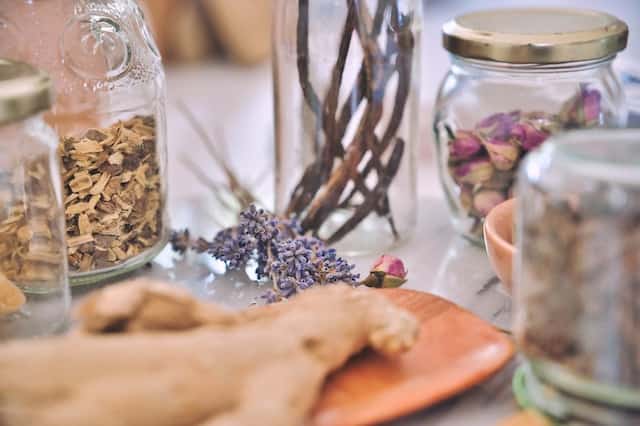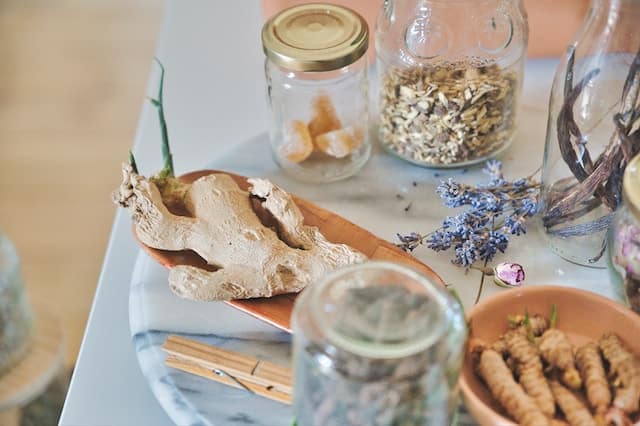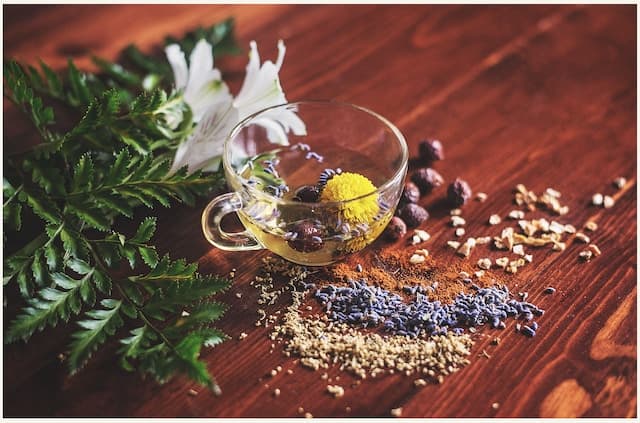Herbalism : Wonders of natural medicine
Discover the power of natural remedies with our Herbalism guide. Learn how to improve your health with plants and herbs. Visit us now!
Traditional herbal medicine has been practiced for many years. It entails the application of plant extracts to a range of diseases. Herbalism is an ancient science that has been utilized by numerous cultures over the course of history.
The Historical Backdrop of Herbalism
The historical backdrop of herbalism can be followed back to old times when individuals involved plants for restorative purposes.
In old China, herbalism was utilized to treat different ailments and was a significant piece of customary Chinese medication. In old Egypt, spices were utilized in the preserving system and for restorative purposes.
In antiquated Greece, spices were utilized by Hippocrates, the dad of present-day medication, to treat different afflictions.
The Advantages of Herbalism
Herbalism offers different advantages.
As far as one might be concerned, a characteristic type of medication doesn’t depend on engineered drugs.
Spices are likewise commonly more affordable than doctor-prescribed prescriptions.
Moreover, many individuals favor Herbalism is viewed as a comprehensive way to deal with recuperating that thinks about the entire individual, in addition to their side effects.
Normal Spices Utilized in Herbalism
There is a wide range of spices utilized in herbalism, each with its own extraordinary properties.
A few normal spices utilized in herbalism include echinacea, ginseng, and St. John’s wort.
Echinacea is often used to help the invulnerable framework, ginseng is utilized to further develop energy levels and mental clarity, and St. John’s wort is utilized to treat melancholy and nervousness.
All in all, herbalism is a customary type of medication that has been utilized for a really long time.
It offers different advantages, including being a characteristic type of medication and a comprehensive way to deal with recuperating.
There are various spices utilized in herbalism, each with its own special properties.
I trust this article measures up to your assumptions, and I anticipate working with you later on.
Basic Concepts of Herbalism is the investigation of plants and their dynamic fixings that can be utilized to advance well-being and forestall sickness. Plants contain different substances that can remedially affect the human body.
Dynamic fixings in plants are explicit substance intensifiers that have a therapeutic value and are utilized in natural medication.
These dynamic fixings can be extracted from the plant and utilized in different structures like teas, colors, and cases.
Active ingredients in plants
With regard to homegrown cures, measurement, and well-being are pivotal elements to consider.
Measurements are how much a spice or dynamic fixing should be utilized for a particular reason.
Natural cures should be taken at the recommended dosage to avoid any unwanted side effects.
Security is additionally significant, as specific spices can collaborate with different medications or have antagonistic impacts on specific individuals.
Consequently, it is fundamental to talk with medical professionals proficiently prior to taking any natural cures.
Dosage and safety
The arrangement and organization of natural cures are likewise significant parts of herbalism.
Different natural cures require various strategies for readiness, like decoctions, implantations, and concentrates.
It is likewise critical to think about the organization’s strategy, like oral ingestion, effective application, or inward breath.
Preparation and administration of herbal remedies
All in all, herbalism is a captivating field that includes the investigation of plants and their dynamic fixings.
Measurement and security, as well as the readiness and organization of homegrown cures, ought to be continuously considered to guarantee the most ideal results.
I trust this short prologue to herbalism has been useful to you. Much obliged to you for the valuable chance to expound on this fascinating point.
Watchwords: dynamics in plants, measurement and well-being, planning, and organization of homegrown cures.
Types of Herbal Remedies
It is a type of elective medication that utilizes plant concentrates and spices to advance well-being and prosperity.
This training has been utilized for a really long time to treat different infirmities and conditions. While I am working on my blog.
History of Herbalism:
Herbalism has a long history, tracing all the way back to ancient civilizations like the Greeks, Egyptians, and Chinese.
Over the entire course of time, It has been utilized to treat everything from cerebral pains and stomach-related issues to additional difficult illnesses like malignant growth and coronary illness.
Infusions and teas
Advantages of Herbalism:
Herbalism has various advantages, including the capacity to reduce susceptibility, decrease aggravation, and reduce torment.
Spices like echinacea, garlic, and ginger have been shown to have safe supporting properties, while turmeric and willow bark can assist with decreasing aggravation and agony.
Instructions to Utilize Spices:
There are numerous ways of utilizing spices, including teas, colors, and containers. A few spices can likewise be applied topically to the skin.
It means quite a bit to converse with medical professionals prior to utilizing any spices, as some can collaborate with drugs and cause secondary effects.
Normal Spices:
There are numerous normal spices utilized in herbalism, including chamomile, lavender, and peppermint.
Every spice has its own interesting properties and uses, making it critical to pick the right spice for each condition or illness.
Herbalism is still generally polished today, with many individuals turning to elective medication as a method for advancing well-being and health.
With its long history and demonstrated benefits, herbalism is probably going to remain a significant piece of elective medication in the indefinite future.
It is the act of utilizing plants and plant concentrates to treat different illnesses.
For a really long time, individuals have turned to spices as a type of medication, and numerous conventional drugs all over the planet depend on homegrown cures.
In this article, we will investigate the various kinds of natural cures and normal spices and their purposes.
Sorts of homegrown cures:
There are many kinds of natural cures, and they can be taken in various forms. Probably the most well-known kinds of natural cures incorporate teas, colors, concentrates, cases, and balms.
Homegrown cures can be utilized to treat different sicknesses, including migraines, sleeping disorders, tension, and stomach-related issues.
Normal Spices and Their Purposes:
Chamomile:
Chamomile is a well-known spice that has been utilized for a really long time to treat various illnesses.
It is known for its quieting properties and is often used to help individuals unwind and rest.
It can likewise be utilized to treat stomach-related issues, such as swelling and heartburn.
Echinacea:
Echinacea is a plant that is native to North America. It is much of the time used to support the invulnerable framework and assist with preventing colds and different contaminations.
It is likewise accepted to have calming properties and may assist with lessening irritation in the body.
St. John’s Wort:
St. John’s Wort is a plant that is often used to treat gloom and nervousness.
It is accepted that it works by expanding the levels of specific synapses in the mind, like serotonin and dopamine.
St. John’s Wort may likewise be successful in treating gentle or direct wretchedness.
All in all, herbalism is a technique that has been utilized for quite a long time to treat different diseases.
There are many kinds of homegrown cures, and they can be taken in various forms.
Chamomile, echinacea, and St. John’s Wort are normal spices that have many purposes and are often used to treat explicit diseases.
By integrating homegrown cures into our regular routines, we can work on our general well-being and prosperity.
Garlic
Garlic is a spice that has been utilized for therapeutic purposes for quite some time.
Having antibacterial, antiviral, and mitigating properties is known. Garlic is additionally rich in cancer prevention agents and has been found to bring down circulatory strain and cholesterol levels.
Integrating garlic into your eating regimen can be as simple as adding it to your feast or taking it as a supplement.
Ginger
Ginger is one more spice that has been utilized for its therapeutic properties for quite some time.
It is known to have calming and cell-reinforcement properties, making it valuable for an extensive variety of medical issues.
Ginger has been viewed as successful in diminishing queasiness and heaviness and may likewise assist with lightening agony and aggravation. It tends to be consumed fresh, as tea, or added to feasts.
It is the review and utilization of plants for restorative purposes.
An all-encompassing way to deal with mending has been utilized for quite a long time.
Natural cures can be utilized to treat various illnesses, from minor issues like migraines and upset stomachs to more difficult circumstances like malignant growth and coronary illness.
There are a few key spices that are usually utilized in herbalism, including chamomile, lavender, and echinacea.
Chamomile is a mitigating spice that can be utilized to quiet nerves and advance unwinding.
Lavender is one more quieting spice that is generally utilized in fragrance-based treatments.
Echinacea is a strong spice that is utilized to support the invulnerable framework and forestall contamination.
Different spices that are regularly utilized in it include ginseng, St. John’s Wort, and ginger.
Notwithstanding spices, there are a few other normal cures that are utilized in it.
These incorporate rejuvenating balms, teas, and colors. Rejuvenating balms are profoundly thought-out remedies that are utilized in fragrant healing and other comprehensive medicines.
Teas and colors are made by soaking spices separately in steaming hot water or liquor and can be utilized to treat different sicknesses.
Generally, herbalism is a strong and regular way to deal with healing that has been utilized for a really long time.
By integrating spices and other normal cures into your life, you can work on your well-being and prosperity in a protected and powerful manner.
To start, I would recommend beginning the article with a prologue to the subject of herbalism and its definition.
From that point, you can cover the different advantages of herbalism concerning well-being and health, including the utilization of regular solutions to prevent and treat different diseases.
You can then continue on toward the fate of herbalism and its true capacity for development in the innovative work area.
As far as innovative work, you can talk about how herbalism is being contemplated and enhanced through logical examination and progressions in innovation.
Also, you can investigate the legal issues and guidelines encompassing herbalism and what they might mean for its development and improvement. At last, you can address the manageability of herbalism and the need to advance mindful practices to safeguard the climate and guarantee the drawn-out accessibility of natural cures.
Through the article, it would be great to consolidate the catchphrases you gave in a characteristic and useful way.
For instance, you can utilize “Herbalism and Wellbeing” as a subheading and examine the different medical advantages of herbalism in that part.
In the part on the eventual fate of herbalism, you can utilize “innovative work,” “legitimate issues and guidelines,” and “supportability” as subheadings to arrange your considerations and data.
Make sure to use unprecedented wording to make the substance unique and draw readers in, while likewise maintaining an expert tone and configuration. Keep away from self-references and focus on giving enlightening and significant substance to your perusers.
Considering these tips, you ought to have the option to compose an extensive and drawn-out article on herbalism.
FAQs
How does a botanist respond?
A botanist is an expert who practices herbalism. They have insider information on different plants and their restorative properties.
Cultivators utilize this information to make customized solutions for their clients to assist them in achieving ideal well-being. They may likewise prescribe way-of-life changes and dietary adjustments to supplement their natural cures.
What is the contrast between herbology and herbalism?
Herbology is the study of spices, while herbalism is the act of involving plants for restorative purposes.
It is more centered around the logical investigation of plants, while herbalism is more centered around the commonsense utilization of plant-based cures.
How would I begin concentrating on herbalism?
The most effective way to begin concentrating on herbalism is by understanding books, going to classes or studios, and finding a coach who can direct you through the cycle.
Finding out about the well-being and possible connections of various spices with different medications is likewise significant.
What are a few normal spices utilized in herbalism?
There are numerous spices regularly utilized in herbalism, including echinacea, ginger, ginkgo, lavender, and chamomile.
Every spice has its own unique properties and uses.
What is the historical backdrop of herbalism?
Herbalism has a long history that traces all the way back to ancient times. Many societies, including the Egyptians,
Greeks, and Chinese, have used spices for restorative purposes for millennia.
Today, herbalism continues to be a significant piece of conventional medicine in many societies all over the planet.
All in all, herbalism is a training that has been utilized for quite a long time to advance well-being and health.
Cultivators utilize their insight into plants to make customized solutions for their clients.
Concentrating on herbalism includes finding out about the properties of various spices and their likely purposes.
Whether you’re keen on involving spices for yourself or turning into a botanist, there are numerous resources accessible to assist you with getting everything rolling.





It’s very interesting! If you need help, look here: ARA Agency